Katie Byerly features yet another native plant I’ve never seen. She has a knack for finding the rare ones! Katie is also known as Iowa Prairie Girl on YouTube.
Is Edible Valerian (Valeriana edulis) edible or not? Valerian is also called Tobacco Root. According to the Montana Plant Life website, some Native Americans cooked the root for two days before eating it. The same site notes, “It has a very strong and peculiar taste that is offensive to some people but agreeable to others.”
Minnesota Wildflowers compares early European accounts of the carrot-like taproot to the usual discussion on lutefisk—meaning you either like it or hate it. I doubt anyone is currently baking valerian root in the ground for days to avoid hunger, but do note that it is poisonous raw.
The only location I have found edible Valerian is in the native prairie in Wilkinson Pioneer Park in Rock Falls (Cerro Gordo County). In north Iowa and at Wilkinson Park, this plant is one of the first taller fluorescence to appear in the spring. While short and almost hidden yellow star and blue-eyed grasses are blooming close to the ground, edible Valerian pop up to one to four feet above early spring prairie flowers.
In this fun photo, I was surprised to find one morel mushroom in the middle of the prairie, next to this smaller Valerian plant.
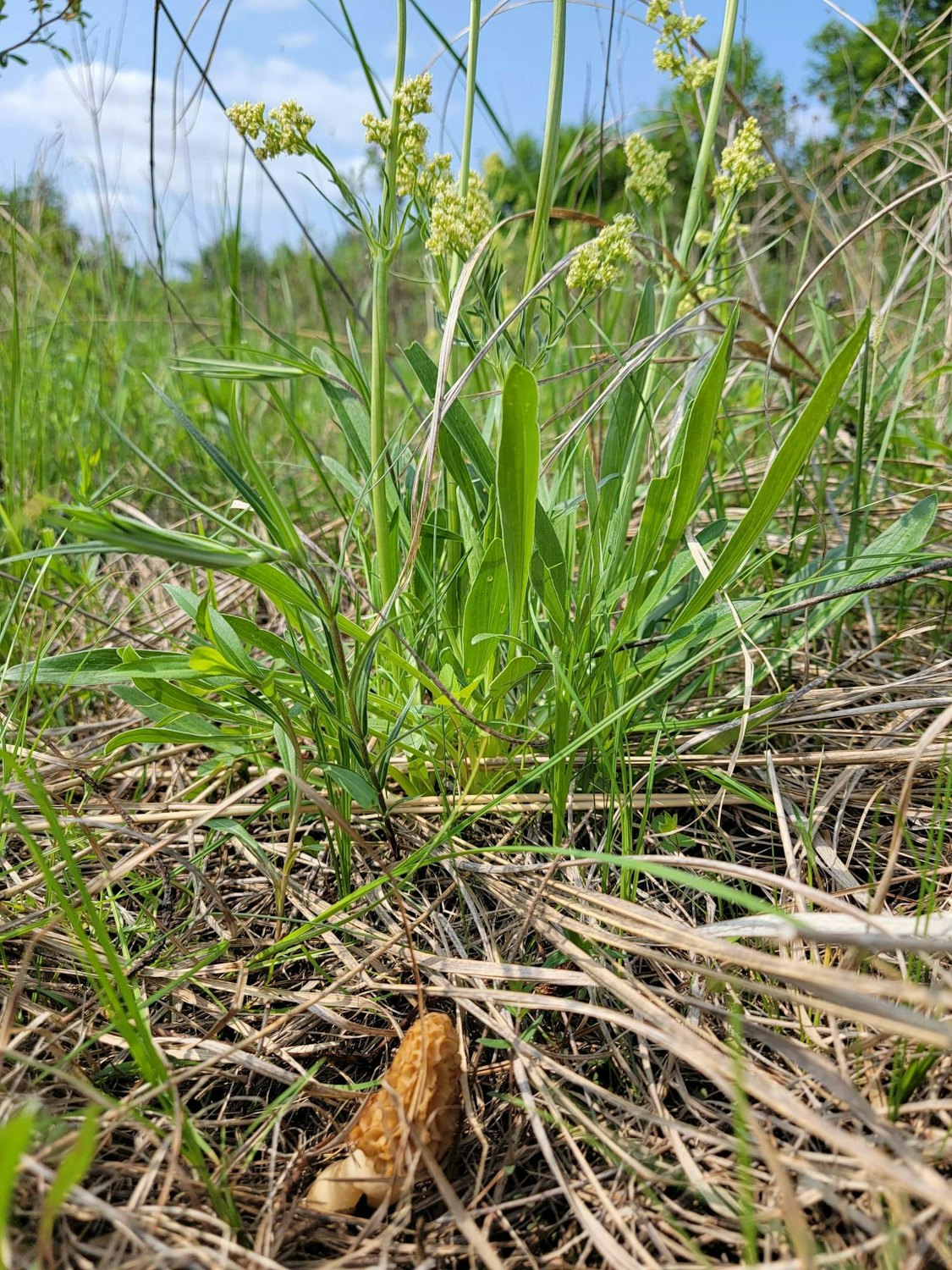
A mature edible Valerian has a lovely bouquet of basal leaves (near the base of the stem).
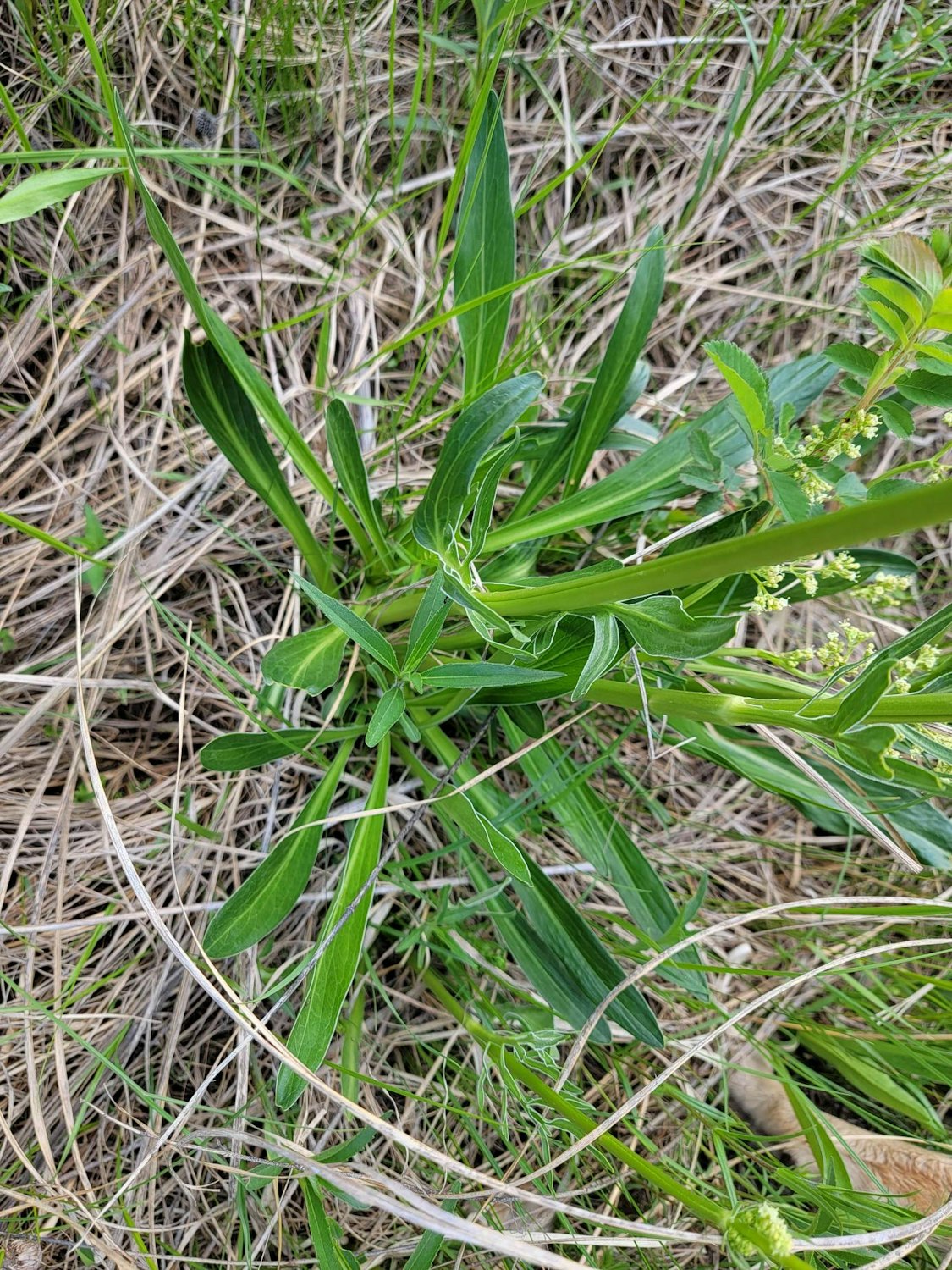
The long, narrow leaves grow between three to twelve inches long and less than an inch wide. Tiny white hairs on the leaf’s edge create a silvery appearance along the edge.
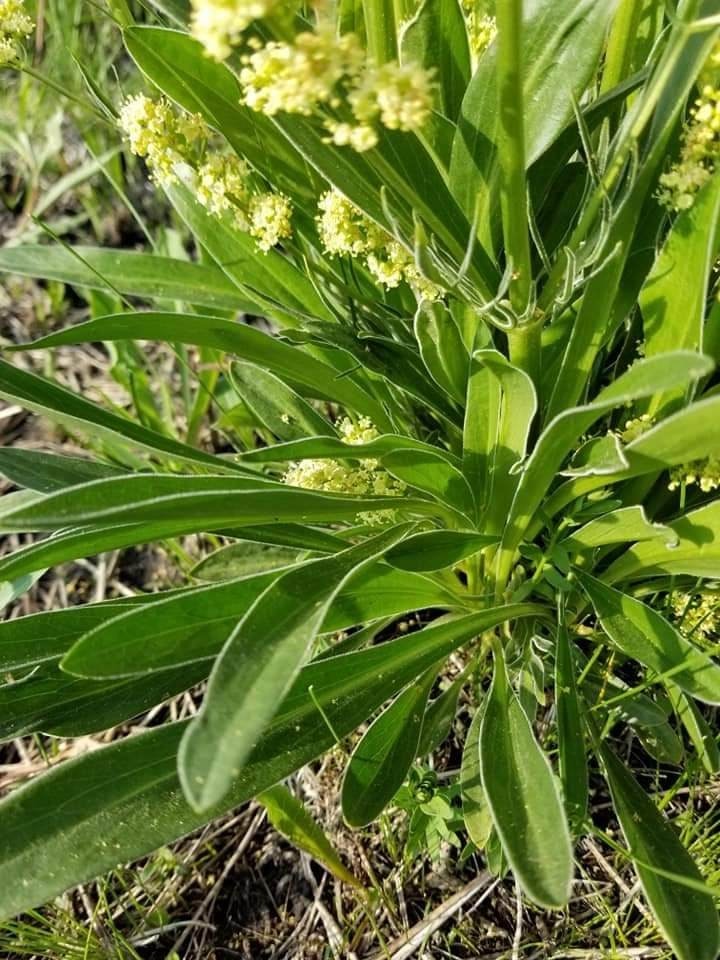
Each plant has multiple erect stems from the base.

The stems branch at the top and hold many tight panicle clusters of flowers.


The flowers are small and appear bunched together with no rhyme or reason. Minnesota Wildflowers put it like this:
The panicle’s clusters are highly irregular in shape, compact at first, spreading out over time. This species is “polygamo-dioecious” meaning it has flowers with both female and male parts (perfect flowers), or just male (staminate flowers) or just female (pistallate flowers) – all on the same plant. Individual flowers are creamy white with 5 fused petals, the lobes lance oval, spreading at first then curling back tightly.

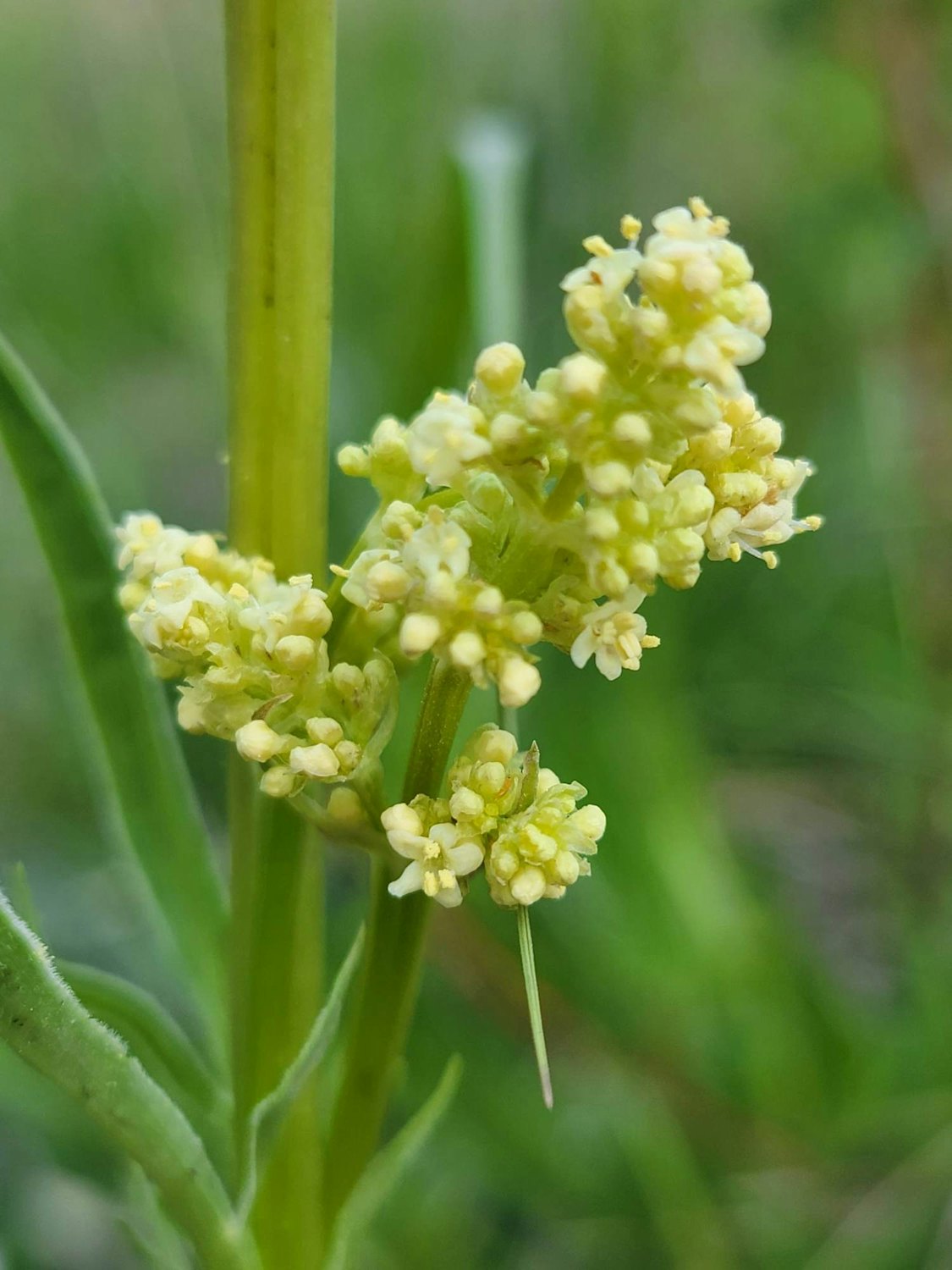
At Wilkinson Park, there are about a dozen smaller plants like this one.
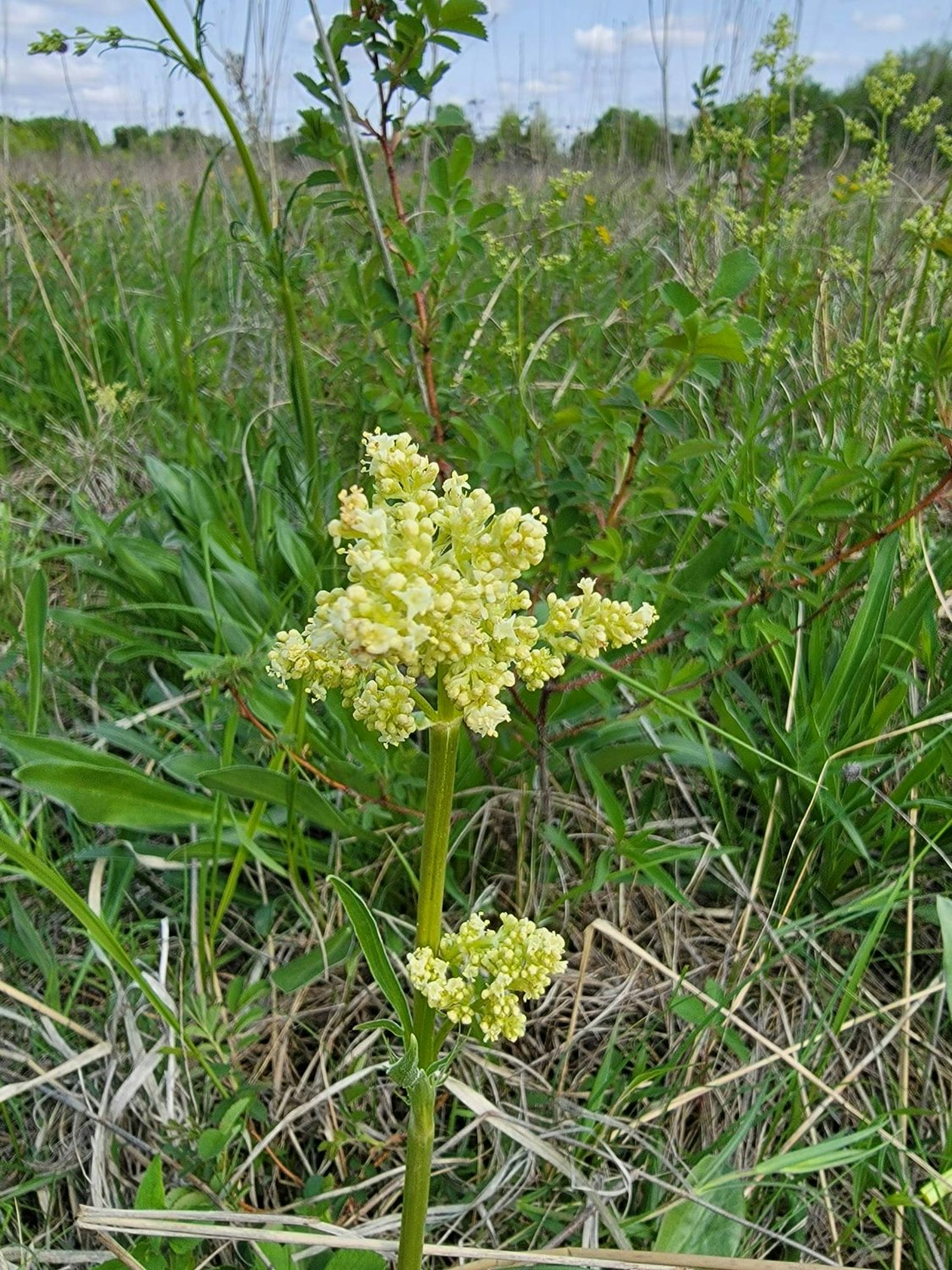
Edible Valerian can grow larger, almost the size of a small bush.

Here’s my favorite prairie companion (Prairie Dog) enjoying Valerian with me.

Edible Valerian does not stand out in the prairie. Even with its height, and the tendency to bloom before taller plants take over, it is easy to overlook.
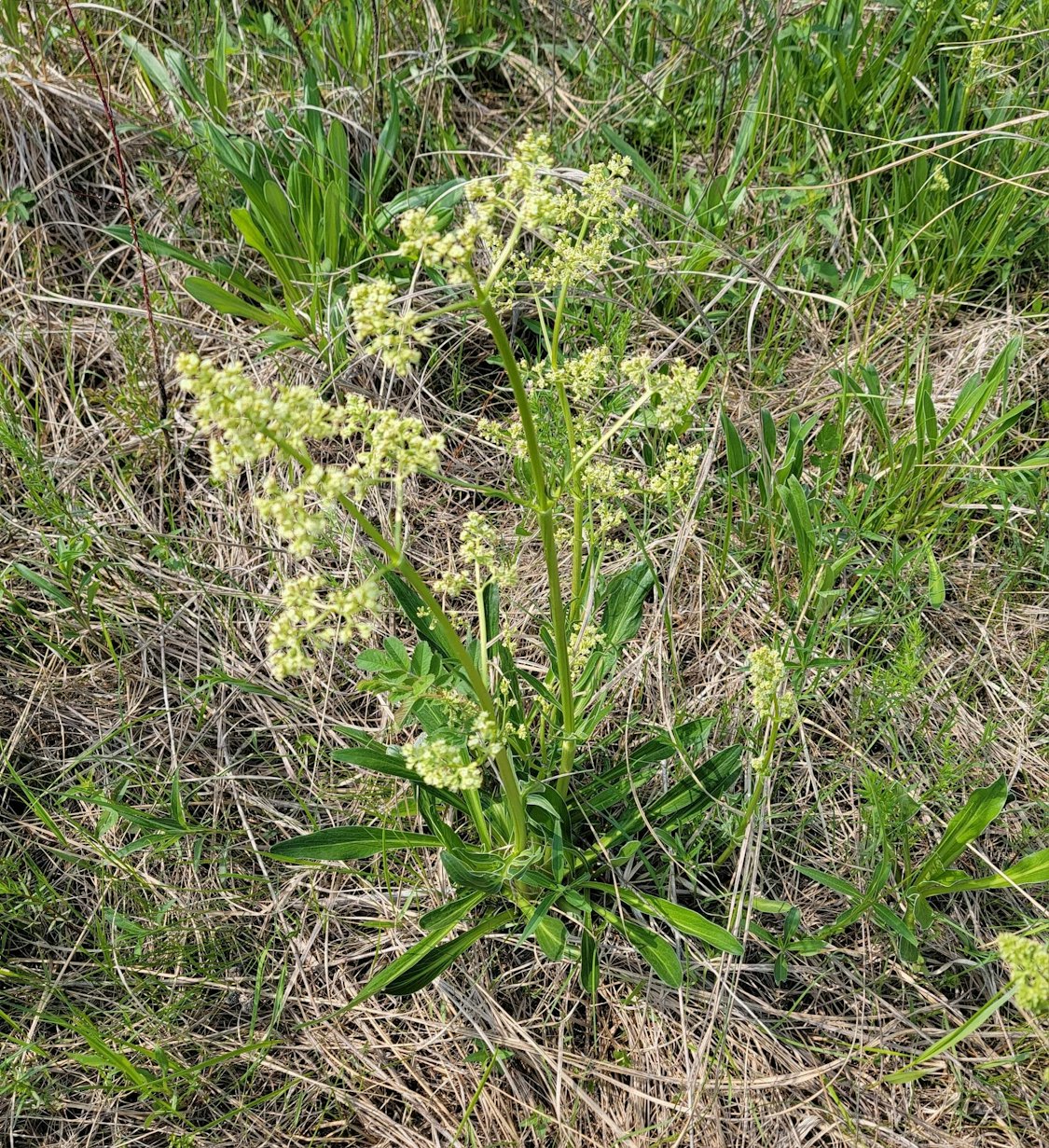
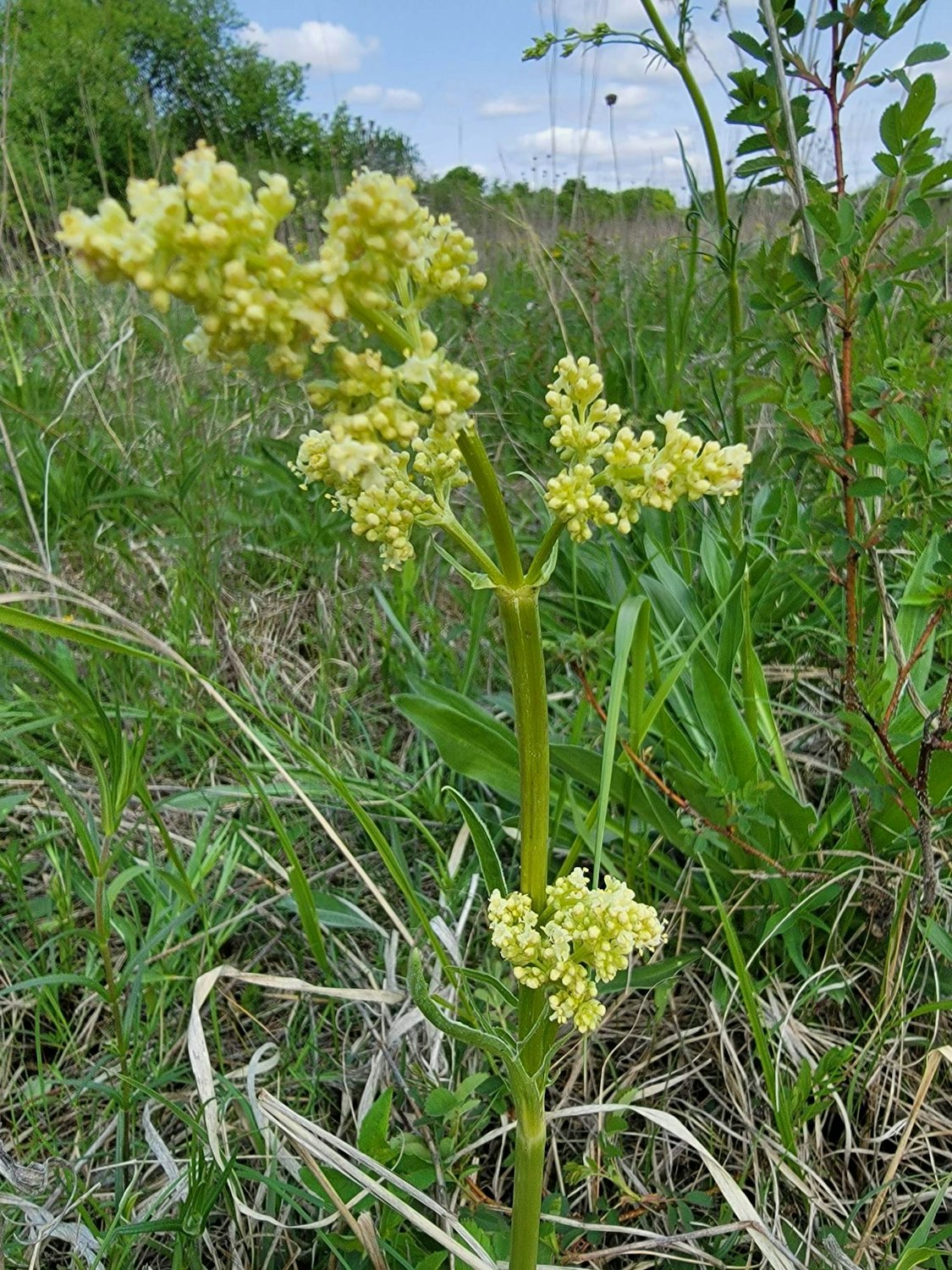
Circling back to is it edible? It’s a good thing other prairie plants don’t find it as offensive as some people do. The Southwest Colorado Wildflowers website writes, “Natives served these roots to John Charles Fremont and his party of western explorers and although the root was ‘agreeable’ to some, to others it was so offensive that they refused to be in the same lodge with it.”

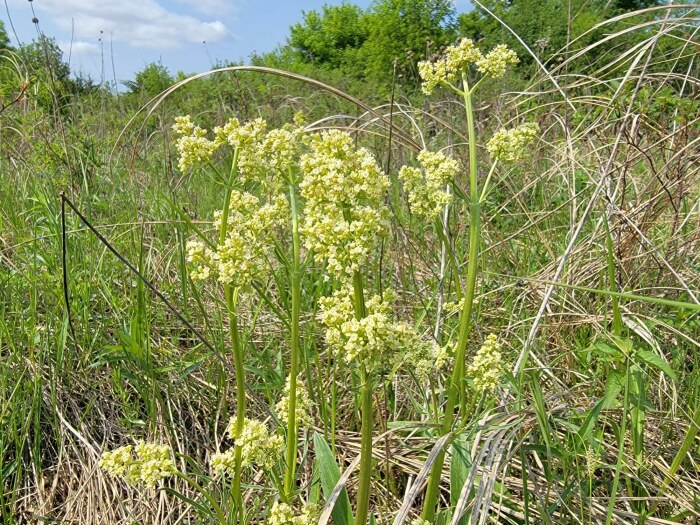
3 Comments
Beautiful interesting photos, thank you!
I looked in the Eilers/Roosa book THE VASCULAR PLANTS OF IOWA. Sure enough, this plant is “rare” in the northeast third of Iowa. I have only seen it once when it had “gone by.” So these photos were a revelation of how lovely it is.
This species does remind me of a question that I think should be asked more often in Iowa. What does “native” mean? This plant is definitely native to Iowa. It is an Iowa native plant. But that does not mean it is native to everywhere in Iowa.
I bring that up partly because every year I see “Native Plant” sales in Iowa, and I just saw an ad for another one. But many of these sales, including the one I just saw advertised, include native plant species that are not native to the counties where they are being sold, and sometimes not to the regions of Iowa where they are being sold. And some are not native to Iowa.
If these sale plants were only going to be planted in urban gardens, there might be no reason at all for any concern. But they could be planted anywhere. And if there’s one thing we have learned in Iowa, it’s that many plant species move around once they are introduced.
I know one prairie restorationist along one boundary of Iowa who now regrets including seed from a native prairie plant that is native along an opposite boundary of Iowa. That species is now behaving invasively in her restoration.
That doesn’t mean it is behaving as badly as some Eurasian invasive exotics like crown vetch and sericea lespedeza. I do wish, however, that there was more education in Iowa regarding what “native plant” really means, and more understanding that complete information about a “native plant” requires more than those two words.
PrairieFan Wed 24 May 9:27 PM
verified native plant of a particular county
I understand the gist of the concern for what is native and what is not. But the Common Milkweed is not listed as occurring in nearly half of the counties of Iowa. Though Clarke County supposedly does not include Common Milkweed as a native, I was walking rows in the field 70 years ago chopping out common milkweed and other plants. Wonder if would have surprised my 2nd and 3rd great grandparents that Common Milkweed is not considered native to Clarke County.. Perhaps they brought it with them from Champaign County, Illinois in 1853 in their ox-drawn wagon … along with 4 kids under the age of 7. http://uipress.lib.uiowa.edu/ppi/display.php?record=Asclepias_syriaca
barry Thu 25 May 5:56 PM
You make an interesting point...
Iowa botanical information is much better in some sources than others. My old copy of THE VASCULAR PLANTS OF IOWA, a standard reference, is very clear that common milkweed is native to all of Iowa.
We definitely know enough, however, to be clearer when communicating with the public. At this point, I’d be happier to see more information at plant sales along the lines of “Native to the southern half of Iowa” or “Native to parts of the Midwest but not Iowa,” or even something like “Some plants at this sale are native to this county and others are not, check (website/book) for more information.” Then any buyers who are interested could learn from there.
PrairieFan Tue 30 May 12:32 PM